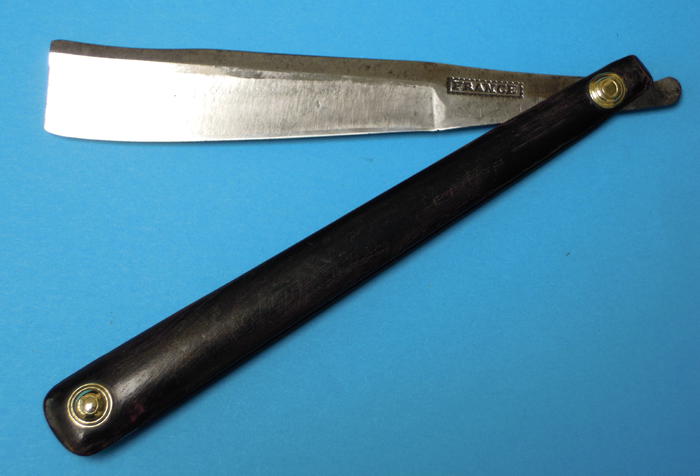Results 1 to 10 of 170
Hybrid View
-
05-02-2015, 08:38 PM #1


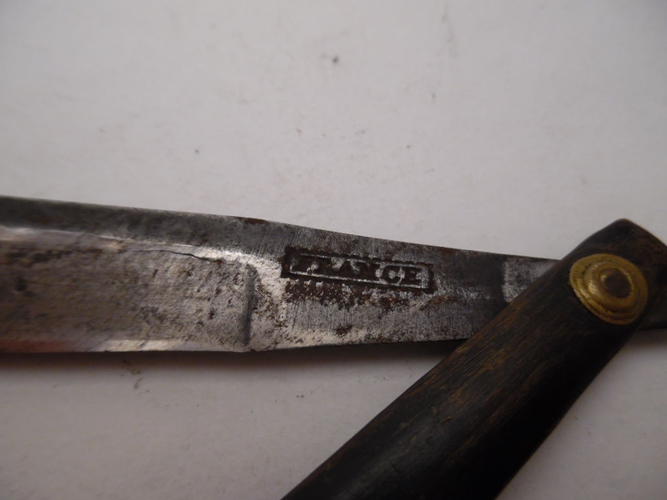
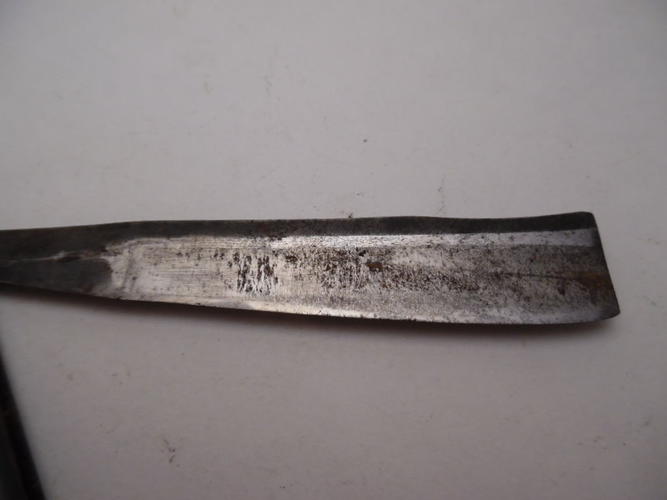
Brittain Wilkinson & Brownell Sheffield (c1780-1840), Sheffield, trademark ‘France’ (Goins')
This one is maybe around 1780-1790'sLast edited by Fikira; 05-02-2015 at 08:44 PM.
-
05-03-2015, 12:58 PM #2

I think it would be very interesting to see if there is a connection between the evolution at the tail (<1775 versus 1775 - 1810), and the evolution of the "S" shaped edge (<1775) to
a more straight line (1775 - 1810)
Did the shape of the edge also changed around 1775?
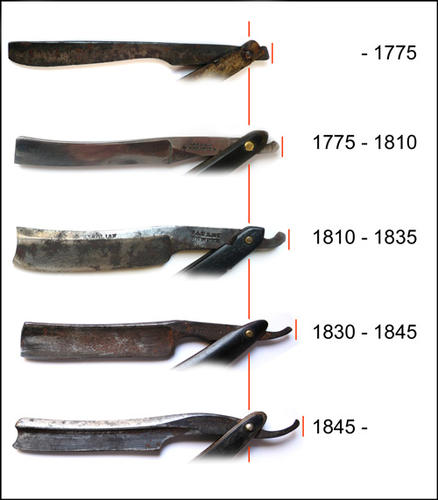
IF that is the case, we could have an extra classification-tool for razors around
1760-1775 ("begin dip-at-toe" to "transition tail / edge shape"),
1775-1790 ("transition period tail / edge shape" to "ending period dip-at-toe"),
and 1790-1800's (evolution after, with forming of shoulder,...)
This is of course very preliminary,and not evidence based (at this moment).
Also, not every razor between 1760 - 1790 would have a "dip-at-toe" in the first place, or have such a "S" shaped edge, this is not exclusive IMHO
If this idea is already uttered in the past, I'm sorry to re-introduce it!
Most kindest regards
-
The Following User Says Thank You to Fikira For This Useful Post:
outback (02-08-2019)
-
05-09-2015, 02:11 PM #3
-
07-05-2015, 12:22 PM #4

Another George Smith, with a very special shape for razors at that time!
http://straightrazorpalace.com/razor...rge-smith.html
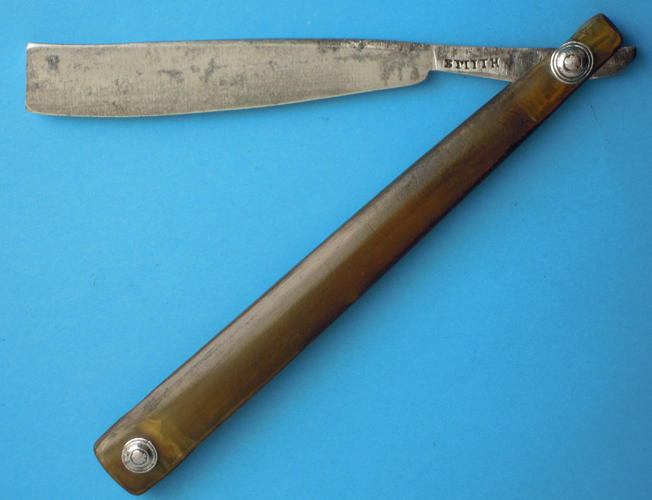
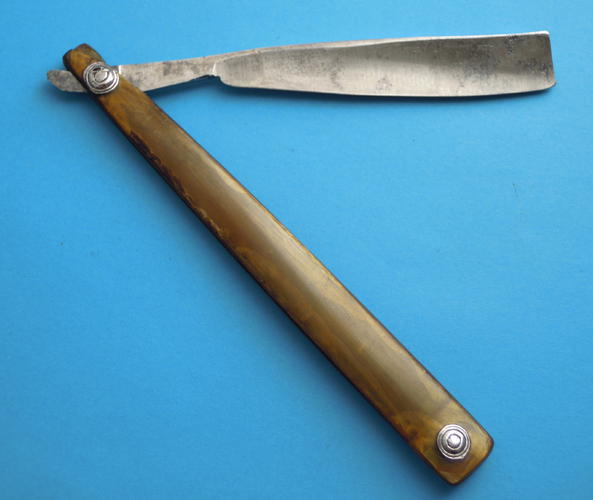

-
07-14-2015, 04:05 PM #5

Here are a couple.
Some very old unidentified ones. Note the vastly different tail styles, but persistence of the hollow in the spine at the toe:
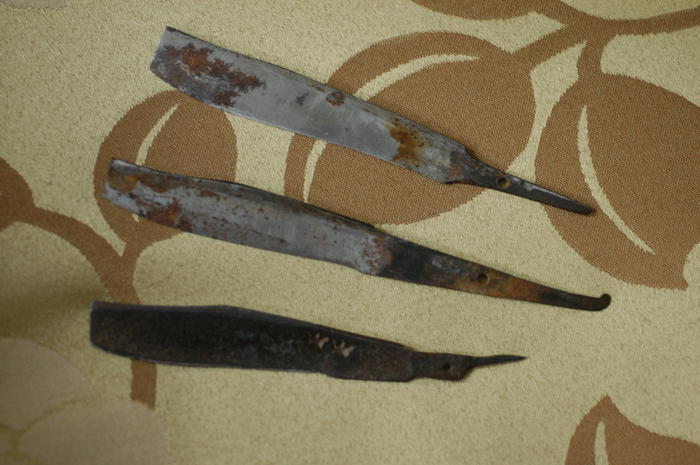
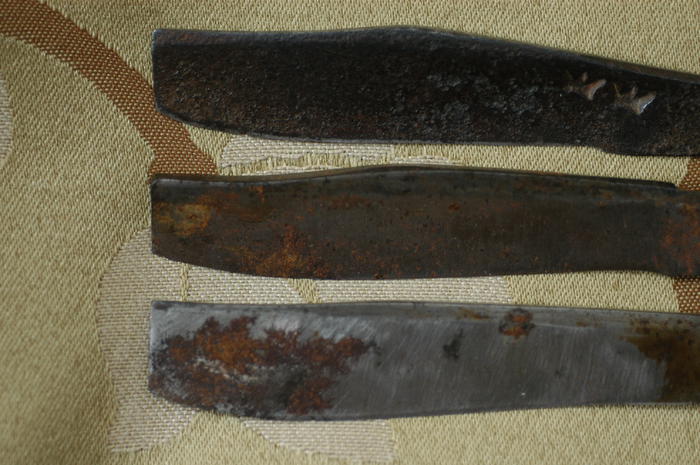
Possibly Brittain Wilkinson & Brownell (FRANCE), and Widow Rowland (R with crescent):

John Leadbeater (ITALY) and possibly John Lindley (pipe with dart):
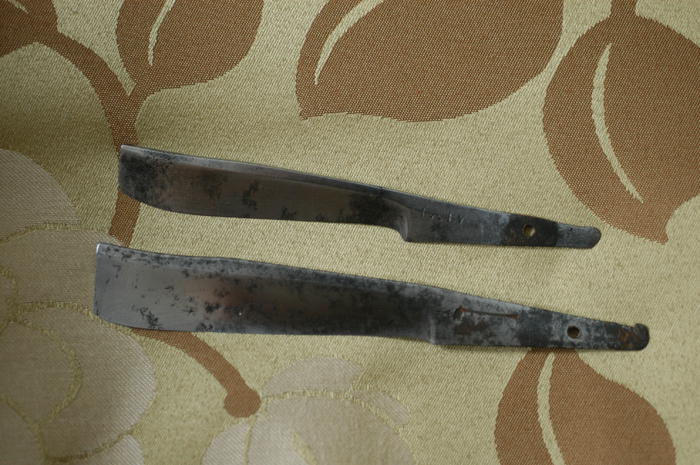
A few as-yet unidentified:
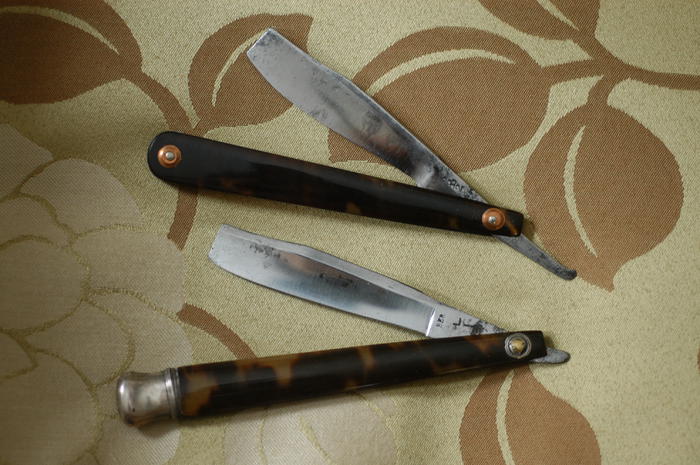

William Warburton (LISBON):
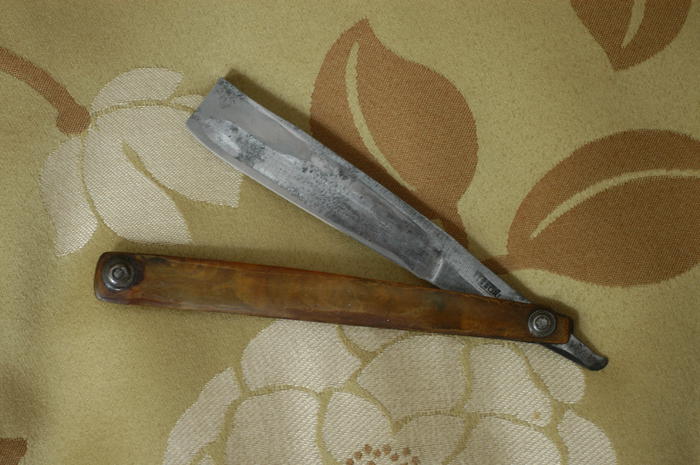
-
-
07-14-2015, 04:52 PM #6

Whaw!
A fantastic contribution!
Thanks a lot!
-
07-14-2015, 08:19 PM #7

John Leadbeater (ITALY) and possibly John Lindley (pipe with dart):

Or maybe even William Lindley?
1774 Sketchley's:

Either way, it fits the timeframe well!
Thanks!Last edited by Fikira; 07-15-2015 at 01:11 PM.
-
07-14-2015, 08:31 PM #8

Now that I look back on it, the two Linleys in the 1774 are differentiated by an additional mark on the pipe (neglecting the fact that that mark is in the wrong orientation). John Linley has an additional diamond. However, the only listing in the 1787 G&M is John, but here without the diamond (William's mark from the 1774). It is now Lindley rather than Linley. More research is clearly needed...
-
The Following User Says Thank You to ScienceGuy For This Useful Post:
Fikira (07-15-2015)
-
07-15-2015, 08:18 AM #9

Indeed, hence my thought it was William
I disregarded the fact that the direction of the
markings were different and that is was Linley, not Lindley, sorry about that...
It seems that John Lindley, Spring Street, in the 1787 Gales & Martin directory had a mark,
that was different (direction of the pipe was better though) then the "dart - pipe" of Linley, Snig Hill:


I also remember a George Johnson (after 1810) with such a mark:
a clay pipe with dart device (granted 1698).

I hope I'll find out who used it since 1698 (it can't be made by this George Johnson)
Will search further
Last edited by Fikira; 07-15-2015 at 01:19 PM.
-
09-10-2015, 07:17 AM #10

( If pics aren't visible, see pictures on top of post #8 at page 1)
For copyright reasons it isn't allowed for me to post pictures,
BUT this kind of tails,also the notch at the spine towards the tang,
are seen on razors of the 11-17th century in the book:
"Straight razors - 900 years of razor and case excellence 1000 - 1900" of "Renzo Jardella" !
If this is true (I would say that they are most definitely older then the 18th century IMHO)
a "Dip-at-toe" on a razor can be found on much older razors
This giving it its first "contradiction"
I do think it should be possible to distinguish these older ones from the period were "Lummus" is talking about,
the future will tell with the growing of this specific club I hope!Last edited by Fikira; 09-10-2015 at 07:29 AM.


 317Likes
317Likes LinkBack URL
LinkBack URL About LinkBacks
About LinkBacks






 Reply With Quote
Reply With Quote

